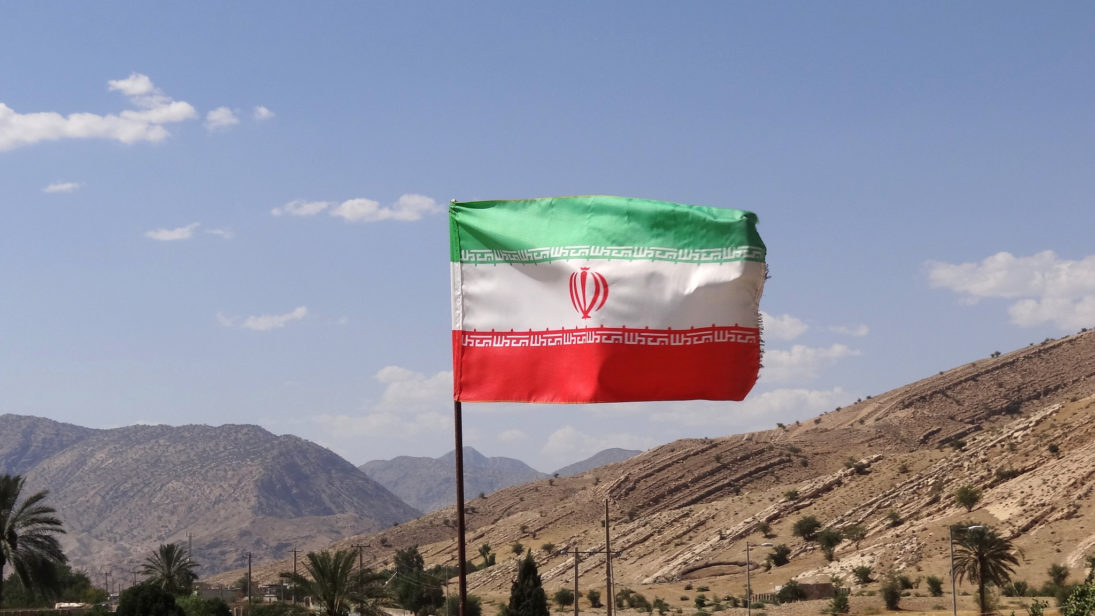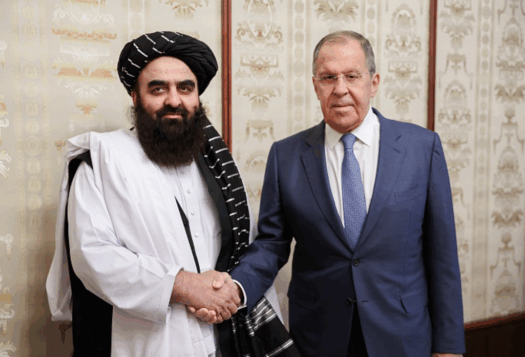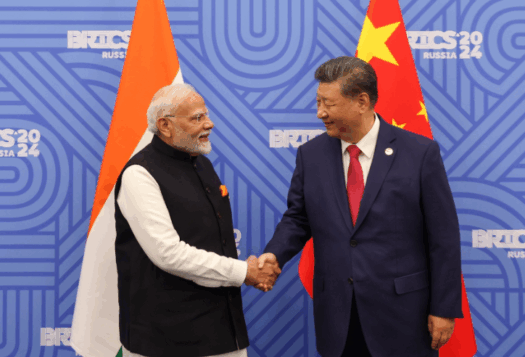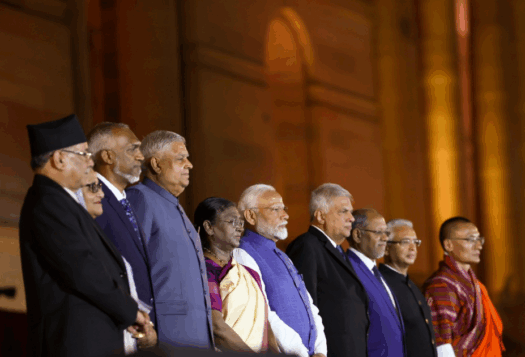
Much has been speculated about the United States’ troop withdrawal announced by President Trump from Syria and, reportedly, from Afghanistan. At the 2019 State of the Union address, Trump said that any troop withdrawals would be dependent on progress at the ongoing peace talks. Iran, a regional power with geopolitical inroads into South Asia, has become a major player in the Afghanistan endgame, having transformed its adversarial relationship with the Afghan Taliban into a cooperative partnership. Tehran’s continued engagement with the Taliban since 2015 is intended to extend and solidify its leverage over Afghanistan’s government following the withdrawal of U.S. and allied forces – a government in which Iran believes the Taliban will have no small part. It desires neither a pro-U.S. government in Kabul nor political system ruled by the Taliban or Sunni extremists under the influence of Saudi Arabia and Pakistan.
ExitAmerica?
If the United States withdraws from Syria and subsequently from Afghanistan or even just reduces its presence, it will likely create a gaping vacuum for extremist groups to germinate. Hardened fighters from Afghanistan and Pakistan that have fought for and against the regime in Syria have already started returning to regional groups such as the Islamic State-Khorasan Province (ISKP). ISKP is the Afghan chapter of the Syria and Iraq-based Sunni terrorist group the Islamic State (IS) and has a presence along the Afghanistan-Pakistan border. Another faction returning from Syria to Afghanistan are Shia Afghan refugees in Iran that had been conscripted to fight for the Assad regime in Syria by Iran as a part of the Fatemiyoun Division consisting of 8,000-14,000 fighters. As the Assad regime in Syria consolidates its gains in the Syrian Civil War, Iran will likely shift these veteran Shia fighters back to Afghanistan. There are already reports that these Shia militias had engaged in armed action against anti-Hazara and anti-Iran groups in Wardak Province.
EnterIran
In the backdrop of a potential U.S. exit from Afghanistan, it is crucial to understand Iran’s interests in Afghanistan and how it has shaped its hedging strategy in Afghanistan. Tehran’s current engagement with the Taliban is likely part of Iran’s multi-pronged strategy to expand its influence, foil U.S. plans in the region, and safeguard its territory from Sunni extremist groups. Following the U.S. invasion of Iraq in 2003, Iran feared it would be next and wanted to use Al-Qaeda affiliates to curtail potential U.S. designs against Iranian interests in the Middle East and Afghanistan. It also had apprehensions that Afghanistan could be used a forward base for U.S. military strikes on Iran’s alleged nuclear weapons facilities. Such fears may not have been totally unfounded, as the United States has often bandied about the threat of use of military force against Iran.
Tehran has, therefore, adopted a policy of “strategic hedging” in Afghanistan for the purpose of furthering its own interests. This has included supporting the U.S.-backed Afghan government and the Taliban simultaneously while playing them against each other when required. To this end, Iran has attempted to use the Taliban as a bulwark by providing material and intelligence support to complicate U.S. military operations in Afghanistan. It has been accused of providing lethal weaponry to the Taliban. Supporting the Taliban is a relatively cost-effective method of undermining American regional interests considering the U.S. withdrawal from the Iranian nuclear deal, and the secrecy of this support gives Tehran plausible deniability.

Increased aid also boosts Iran’s influence over the Taliban—a logical policy if the United States leaves Afghanistan. This is tied to fears of Pakistan and its Afghan proxies like the Taliban coming increasingly under Saudi Arabia’s umbrella. (Though Pakistan has to an extent resisted overtly joining any Saudi-led anti-Iran coalition, Islamabad leans more towards Riyadh than Tehran.) Any future Afghanistan with a ruling body over which Riyadh and Washington may have uncontested leverage is a dire concern for Tehran. Moreover, Iran’s regional rival Saudi Arabia, a U.S. ally, has been linked to Sunni extremist groups fighting against Iran. These include the Jaish ul-Adl (JuA), who are based in Pakistan. JuA carried out a suicide bombing of an Iranian military convoy on the February 13th that killed 27 troops. In a regional scenario in which Sunni extremist groups are permitted to proliferate, Iran might then possibly face attacks not just from Pakistan-based groups, but Afghanistan-based groups as well. To circumvent this, Tehran is attempting to bring the Taliban out of the shadow of their Pakistani and Gulf support base and give them incentives such as working together to target their common enemy in return for Taliban guarantees to not let Afghanistan be used for attacks in Iran.
TheAfghan Endgame
Given Iran’s national security interests, it has been motivated to harness its relationship with the Taliban to hold private meetings and talks with the organization since 2015. It also began a renewed push to engage in the current dialogue process particularly after it perceived that Saudi Arabia and the United Arab Emirates (UAE) attempted to pull the Taliban away from Qatar. Iranian sources have been quoted as saying that it met with the Taliban because it held concerns that U.S.-Taliban talks might be “exploited” by the UAE, Saudi Arabia, or the United States to “create havoc.” On December 30th, 2018 a Taliban delegation met the Iranian deputy Foreign Minister for Political Affairs Abbas Araqchi in Tehran. The talks were reportedly to set parameters for negotiations between the Taliban and the Afghan government.
It does not want Afghanistan to descend into anarchy, as this would make it a breeding ground for extremists of all kinds as well as jeopardize Iran’s potential transit route from the newly developed Chabahar port via Afghanistan to India. However, it also does not want a stable government in Kabul extremely reliant on Washington for its functioning, nor does it want an Afghanistan ruled by the Taliban or Sunni extremists with the blessings of Saudi Arabia and Pakistan.
While Tehran has shared information about its meetings with the Taliban with the Afghan government and maintains that it has coordinated with the Afghan government in conducting the talks, the full scope of those talks remains speculative. Going forward as the United States and the Taliban further conversations about a negotiated settlement, it remains to be seen how Iran as a common link between the Afghan government and the Taliban plays out in an endgame for the region, since the Taliban continues to ignore the elected government of Afghanistan. The Taliban have not discontinued their armed attacks on Afghan security forces and do not seem to show signs of abatement, despite ongoing peace talks.
In these talks, Iran is likely advancing its delicate agenda with regards to a post-U.S. Afghanistan. It does not want Afghanistan to descend into anarchy, as this would make it a breeding ground for extremists of all kinds as well as jeopardize Iran’s potential transit route from the newly developed Chabahar port via Afghanistan to India. However, it also does not want a stable government in Kabul extremely reliant on Washington for its functioning, nor does it want an Afghanistan ruled by the Taliban or Sunni extremists with the blessings of Saudi Arabia and Pakistan. Ultimately, Iran desires a scenario in which there is not a spillover of Sunni extremism from Afghanistan to Iran and U.S. forces are unable to exercise power projection capabilities in West Asia.
To this end, Iran and the Taliban, despite their major differences, will continue working with each other as long as their mutual interests permit. Iran will continue to arm and support the Taliban especially in Afghan provinces bordering Iran such as Farah, Nimroz and Herat as these are the areas where Iran has the most influence in Afghanistan both logistically and culturally. Keeping the United States bogged down in a bloody and costly war almost nearing two decades against the Taliban – which had once been antagonistic to Iran – is serving Tehran’s interests just fine.
***
Click here to read this article in Urdu.
Image 1: Adam Jones via Flickr
Image 2: Anadolu Agency via Getty Images


